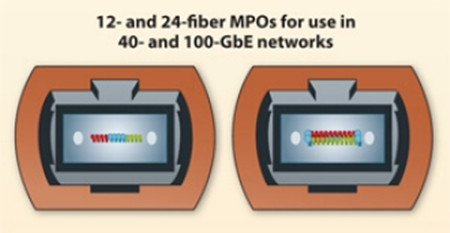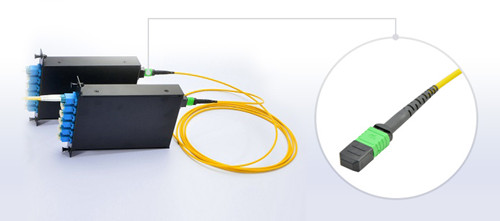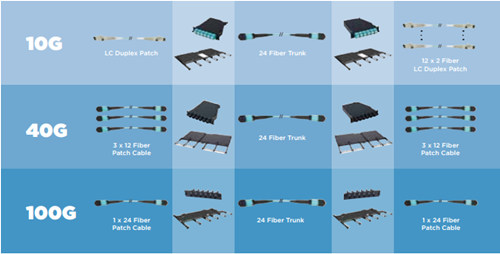Nowadays one and 10 Gbqs data rates are not adequate to meet the continued requirement for expansion and scalability in the data center, thus technology evolves and standards are completed to define higher data rates such as 40/100G Ethernet. In the meanwhile the cabling infrastructures installed today must provide scalability to accommodate the need for more bandwidth in support of future applications. OM3 and OM4 multimode cabling solutions have been proven to be a cost-effective solution for 40G data center. Today’s article will make you familiarize with this new Gigabit Ethernet and OM3/OM4 cabling to help you smoothly upgrade to 40G Ethernet.
Multimode Fibers in Data Center
Multimode fiber is more popular in data centers than singlemode fiber. Many people may know the reason—budget. Because the price of multimode fiber is typically much lower than singlemode fiber. Additionally, multimode fibers utilizes the low cost 850nm optical transceiver for both serial and parallel transmission. While singlemode fiber uses the expensive 1310nm and 1550nm transceiver and duplex fiber wavelength division multiplexing (WDM) serial transmission. Therefore, most data center designers would choose multimode fiber for 40/100G transmission.
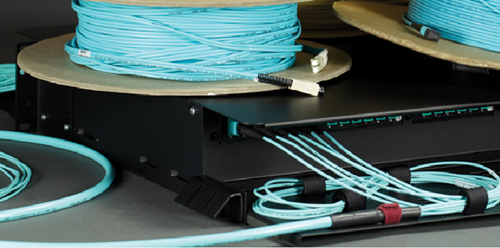
There are four common types of multimode fibers available in the market—OM1, OM2, OM3 and OM4. Recently OM3 and OM4 cables are gradually taking place of OM1 and OM2 multimode cable. OM3 and OM4 are laser-optimized multimode fibers with 50/125 core, which are designed to accommodate faster networks such as 10, 40 and 100 Gbps. Compared with OM1 (62.5/125 core) and OM2 (50/125 core), OM3 and OM4 can support high data rate and longer distance. This is why OM3 and OM4 is more popular in data center.
The Ratification of IEEE 802.3ba
The Institute of Electrical and Electronics Engineers (IEEE) 802.3ba 40G/100G Ethernet standard was ratified in June 2010. According to this standard, it includes detailed guidance for 40/100G transmission with multimode and singlemode fibers. But the standard does not have guidance for Category-based unshielded twisted-pair or shielded twisted-pair copper cable.
OM3 and OM4 are the only multimode fibers included in 40/100G standard. Because multimode fiber uses parallel-optics transmission instead of serial transmission due to the 850-nm vertical-cavity surface-emitting laser (VCSEL) modulation limits at the time the guidance was developed. Compared to traditional serial transmission, parallel-optics transmission uses a parallel optical interface where data is simultaneously transmitted and received over multiple fibers. Table 2 shows the IEEE standards for 40 and 100 GbE.
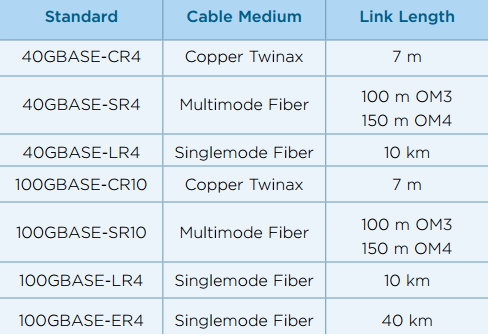
The 40G and 100G Ethernet interfaces are 4x10G channels on four fibers per direction, and 10x10G channels on 10 fibers per direction, respectively. For 40GBASE-SR4 transceivers, it utilizes multimode fiber for a link length of 100m over OM3 and 150m over OM4. QSFP-40G-SR4 is Cisco 40GBASE-SR4 QSFP+ that can both operate over OM3 and OM4 cables to achieve 40G connectivity just as FTL410QE2C.
OM3 or OM4?
As noted before, OM3 and OM4 can meet the requirement for 40G migration cabling performance, that’s why they are being widely utilized in 40/100G migration. But OM3 and OM4, which is better for your infrastructure? There is no exact answer to this question as numerous factors can affect the choice. The working environment and the total costs are always the main factors to be considered when selecting OM3 or OM4 multimode cable.
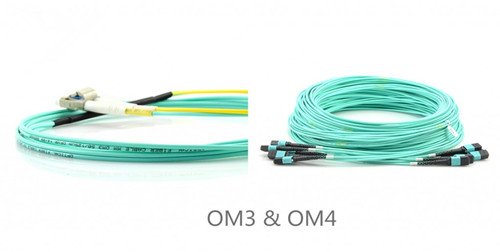
OM3 is fully compatible with OM4. They use the same optical connector and termination of connector. The main difference between them is in the construction of fiber cable that makes OM4 cable has better attenuation and can operate higher bandwidth at a longer distance than OM3. On the other hand, the cost for OM4 fiber is higher than OM3. As 90 percent of all data centers have their runs under 100 meters, choosing OM3 comes down to a costing issue. However, in the long term, as the demand increases, the cost will come down. OM4 will become the most viable product in the near future.
Conclusion
No matter choosing OM3 or OM4 for your infrastructure, 40G migration is in the corner. OM3 and OM4 multimode cable featured by the high performance and low cost are the perfect solution for 40/100G migration. Fiberstore is committed to provide the best-service and high-quality products to customers. Our comprehensive range of products in OM3 and OM4 offer customers the ability to create the optimal network. For more information, you are welcome to contact us.

